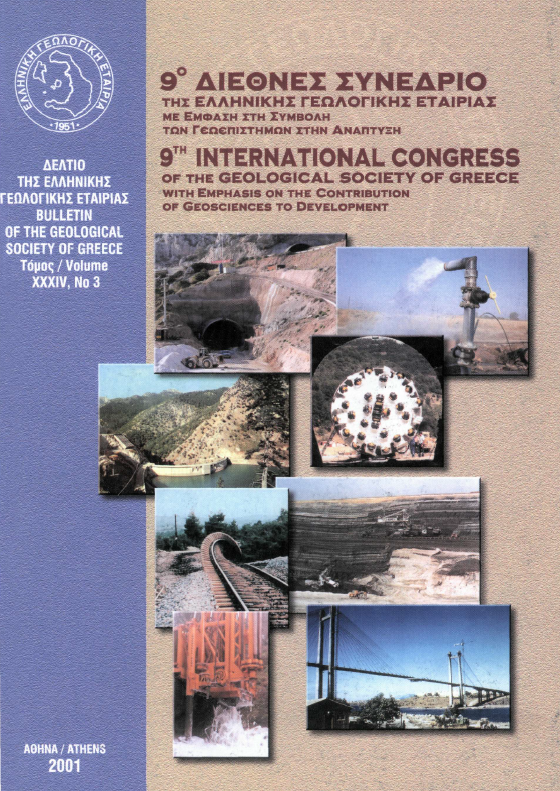The Polychnitos ignimbrite of Lesvos island

Abstract
Miocene volcanism on Lesvos was particularly explosive giving rise to two extensive pyroclastic formations, the Sigri pyroclastics to the west and the Polychnitos ignimbrite to the east of the island. The Polychnitos ignimbrite at 17.2±0.5 Ma (Borsi et al.1972) is part of the shoshonitic succession on Lesbos which ranges in composition from basalt to rhyolite and is both underlain and overlain by calcalkaline volcanic rocks (Pe-Piper and Piper 1993) resting on a late Paleozoic metamorphic basement which has acted as an impediment to the free flow of the ignimbrite. The Polychnitos ignimbrite consists of eight lithological units, six of which are presumed to be facies of the same ignimbrite sheet ("PK", "PU", "MGF I, II, III", "Z"). Ignimbrite deposition at elevated temperatures is advocated by its columnar jointing, eutaxitic texture, gas escape structures and glassy zones of intense welding. The typical mineral assemblage of all Polychnitos ignimbrite units consists of plagioclase, Kfeldspar and biotite. It displays phenocryst microtextures indicative of magma mixing. Magma mixing is corroborated of glasses of two discrete compositions. Lithic clast measurements indicate a northeasterly trending fissure vent passing from the northeastern corner of the Kalloni Gulf.
Article Details
- How to Cite
-
LAMERA, S., SEYMOUR, K. S., VAMVOUKAKIS, C., KOULl, M., PARASKEVAS, E., & PE-PIPER, G. (2001). The Polychnitos ignimbrite of Lesvos island. Bulletin of the Geological Society of Greece, 34(3), 917–921. https://doi.org/10.12681/bgsg.17118
- Section
- Petrology

This work is licensed under a Creative Commons Attribution-NonCommercial 4.0 International License.
Authors who publish with this journal agree to the following terms:
Authors retain copyright and grant the journal right of first publication with the work simultaneously licensed under a Creative Commons Attribution Non-Commercial License that allows others to share the work with an acknowledgement of the work's authorship and initial publication in this journal.
Authors are able to enter into separate, additional contractual arrangements for the non-exclusive distribution of the journal's published version of the work (e.g. post it to an institutional repository or publish it in a book), with an acknowledgement of its initial publication in this journal. Authors are permitted and encouraged to post their work online (preferably in institutional repositories or on their website) prior to and during the submission process, as it can lead to productive exchanges, as well as earlier and greater citation of published work.


